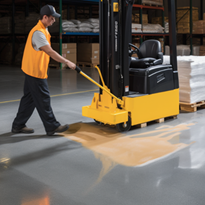When it comes to optimizing your warehouse operations, investing in the right equipment is crucial. A hand pallet jack, also known as a pallet truck or pallet mover, is an essential tool for efficiently moving and handling palletized goods. In this guide, we will provide you with a comprehensive overview of choosing and buying a hand pallet jack that meets your specific needs.
Understanding Hand Pallet Jacks
What is a Hand Pallet Jack?
A hand pallet jack is a manual material handling device used to lift and transport pallets within a warehouse or distribution centre. It consists of a wheeled chassis, forks for lifting the pallets, and a hydraulic mechanism for raising and lowering the load. Hand pallet jacks are designed to be operated by hand, allowing users to maneuver heavy loads with ease.
Key Features to Consider
When selecting a hand pallet jack, several key features should be taken into account:
- Load Capacity: Determine the maximum weight your pallet jack needs to handle. Consider both the average weight of your loads and any occasional heavier loads to ensure the jack can accommodate your requirements.
- Fork Length: Fork length affects the size and type of pallets your jack can handle. Longer forks are suitable for larger pallets, while shorter forks work well for smaller or non-standard pallets.
- Fork Width: Ensure the fork width matches the opening between the pallet boards. Standard pallets typically have a width of 27 inches, but variations exist.
- Lift Height: Evaluate the maximum lift height of the jack. This is especially important if you need to stack pallets or transport goods to different heights within your facility.
- Construction Quality: Look for a hand pallet jack constructed with durable materials to withstand heavy usage and provide long-lasting performance.
- Steering and Maneuverability: Consider the ease of steering and maneuvering the pallet jack in tight spaces. Smooth and responsive steering mechanisms can significantly enhance operational efficiency.
Types of Hand Pallet Jacks
-
Standard Hand Pallet Jacks
Standard hand pallet jacks are the most common type available in the market. They are designed for general-purpose use and can handle a wide range of applications. These jacks usually have a load capacity ranging from 2,500 to 5,500 pounds and are suitable for most warehouse environments.
-
Heavy-Duty Hand Pallet Jacks
For warehouses dealing with exceptionally heavy loads, a heavy-duty hand pallet jack is the ideal choice. These jacks are specifically designed to handle increased weight capacities, often ranging from 5,000 to 8,000 pounds. Heavy-duty pallet jacks are constructed with robust materials, reinforced frames, and enhanced hydraulic systems to ensure optimal performance under demanding conditions.
-
Low Profile Hand Pallet Jacks
In facilities with low-clearance areas, such as containers or trucks with low entry heights, a low profile hand pallet jack is essential. These jacks have a lower fork height, allowing them to access tight spaces with ease. They are commonly used in industries like transportation, logistics, and retail where space constraints are a concern.
-
Electric Hand Pallet Jacks
Electric hand pallet jacks offer a powered alternative to manual jacks, reducing the physical effort required to lift and maneuver heavy loads. They are equipped with an electric motor that powers the lifting mechanism, eliminating the need for manual pumping. Electric hand pallet jacks come in two main variants:
Importance of Load Capacity
Load capacity refers to the maximum weight a hand pallet jack can safely handle. Understanding the load capacity of your pallet jack is crucial to prevent overloading, which can lead to accidents, equipment damage, and workplace injuries. Exceeding the load capacity can strain the hydraulic system, compromise stability, and pose a significant risk to the operator and surrounding personnel.
-
Understanding Load Capacity Ratings
Load capacity ratings are typically indicated on the hand pallet jack and provide valuable information about its capabilities. These ratings specify the maximum weight the pallet jack can lift under ideal conditions. It is essential to check the load capacity rating before each use to ensure you are operating within safe limits.
-
Factors Affecting Load Capacity
Several factors influence the load capacity of a hand pallet jack. These include the construction quality, material strength, hydraulic system efficiency, and overall design. Additionally, the load distribution on the forks, surface conditions, and angle of operation can impact the pallet jack's ability to handle loads effectively. It is crucial to consider these factors when determining the appropriate load capacity for your specific requirements.
-
Fork Length: Finding the Right Fit
The fork length of a hand pallet jack plays a vital role in determining its compatibility with different types of loads and working environments. Forks are available in various lengths, and choosing the right size is essential for optimizing efficiency and ensuring safe operation. The fork length should be carefully selected to accommodate the dimensions of the loads you commonly handle.
-
The Role of Fork Length in Different Applications
The suitability of fork length varies depending on the specific application. In narrow aisles or confined spaces, shorter forks provide better maneuverability. Conversely, longer forks are advantageous when handling oversized loads or pallets with extended dimensions. Assessing your operational needs and considering the typical load sizes will guide you in selecting the most suitable fork length for your hand pallet jack.
-
Choosing the Appropriate Fork Length
To determine the appropriate fork length, measure the dimensions of your typical loads, including their length, width, and height. Ensure that the selected fork length provides sufficient support to prevent overhang, which can lead to load instability and accidents. Consulting the manufacturer's guidelines or seeking expert advice can help you make an informed decision when choosing the fork length.
-
Load Capacity vs. Fork Length: Striking the Balance
Finding the balance between load capacity and fork length is essential for optimal performance and safety. While it may be tempting to prioritize high load capacities, remember that longer forks can affect stability and maneuverability, especially when dealing with heavier loads. It is crucial to find the right combination that meets your load requirements without compromising the safe operation of the hand pallet jack.
How to Choose the Right-Hand Pallet Jack
When it comes to material handling equipment, selecting the right hand pallet jack is crucial for efficient operations and worker safety. With a wide variety of options available in the market, it can be overwhelming to determine which one suits your specific needs. In this article, we will guide you through the essential factors to consider when choosing a hand pallet jack.
1. Assess your Load Requirements
The first step in selecting a hand pallet jack is to assess your load requirements. Determine the average weight of the loads you typically handle. Consider both the minimum and maximum weight limits to ensure the pallet jack can accommodate your entire range of loads. Additionally, consider the dimensions of the loads, including length, width, and height, to ensure they can be easily maneuvered by the pallet jack.
2. Determine Load Capacity
Load capacity refers to the maximum weight that a hand pallet jack can safely handle. It is crucial to choose a pallet jack with a load capacity that exceeds your maximum load weight. Keep in mind that overloading a pallet jack can lead to accidents, equipment damage, and workplace injuries. Refer to the manufacturer's specifications to ensure the chosen pallet jack can handle your desired load capacity.
3. Consider Fork Length
Fork length is another important consideration when choosing a hand pallet jack. The fork length should be compatible with the size of the pallets or loads you commonly handle. If you frequently deal with larger or longer pallets, opt for a pallet jack with longer forks to ensure proper support and stability. However, if you primarily work in narrow spaces, shorter forks may be more suitable for maneuverability.
4. Evaluate Ergonomic Features
Worker comfort and safety are crucial aspects to consider when selecting a hand pallet jack. Look for pallet jacks that offer ergonomic features such as adjustable handle height, cushioned grips, and smooth maneuverability. These features can minimize operator fatigue and reduce the risk of injuries, ultimately improving productivity and workplace efficiency.
5. Check Durability and Construction
The durability and construction of a hand pallet jack are vital for long-term usage. Look for pallet jacks made from high-quality materials that can withstand the demands of your specific work environment. Consider factors such as frame construction, wheel quality, and overall build quality. Investing in a durable pallet jack will save you money and time on repairs or replacements in the future.
6. Evaluate Maneuverability
Maneuverability is a critical factor, especially if you work in tight spaces or narrow aisles. Look for hand pallet jacks with smooth-rolling wheels that can easily navigate through obstacles and uneven surfaces. Consider features like swivel wheels or tight turning radius, which enhance maneuverability and make it easier to position loads accurately.
7. Consider Maintenance and Serviceability
Regular maintenance is essential for the longevity and optimal performance of your hand pallet jack. Before making a purchase, inquire about the availability of spare parts and the ease of servicing the equipment. Choosing a pallet jack from a reputable manufacturer or supplier ensures access to spare parts and reliable servicing options, minimizing downtime and prolonging the lifespan of your equipment.
8. Evaluate Safety Features
Safety should always be a top priority when selecting a hand pallet jack. Look for features like a reliable braking system, reinforced forks, and secure load retention mechanisms. These features contribute to safe operation and prevent accidents, protecting both the operator and the surrounding personnel.
9. Consider Price and Value for Money
While price is an important consideration, it should not be the sole determining factor. Evaluate the overall value for money when selecting a hand pallet jack. Consider the quality, durability, and features offered by different models within your budget range. Opting for a slightly higher-priced pallet jack that offers better performance and longevity can be a wise investment in the long run.
Understanding Your Needs: Questions to Consider When Determining Specific Requirements
Choosing the right hand pallet jack for your specific requirements involves a thorough understanding of your needs. By asking yourself the right questions, you can gather the necessary information to make an informed decision. Here are some essential questions to consider when determining your specific hand pallet jack requirements:
1. What is the typical weight of the loads you handle?
Understanding the average weight of the loads you handle is crucial in determining the appropriate load capacity for your hand pallet jack. Consider both the minimum and maximum weight limits to ensure the pallet jack can accommodate the full range of your loads.
2. What are the dimensions of your loads?
Take into account the length, width, and height of your loads. This information will help you choose a hand pallet jack with fork lengths that can comfortably support your loads without compromising stability or safety
3. Do you frequently work in narrow spaces or confined areas?
If your work environment involves maneuvering in tight spaces or narrow aisles, selecting a hand pallet jack with shorter forks can enhance maneuverability and ensure efficient operation. Assessing the spatial constraints of your workspace is crucial in determining the optimal fork length for your needs.
4. What is the level of operator comfort and safety you require?
Consider the ergonomics of the hand pallet jack, such as adjustable handles, cushioned grips, and smooth maneuverability. These features contribute to operator comfort, reduce fatigue, and minimize the risk of injuries. Determine the level of ergonomic features necessary to create a safe and comfortable working environment.
5. What is the expected lifespan of the hand pallet jack?
Understanding the longevity you require from your equipment will influence the level of durability and construction you need. Evaluate the materials used in the manufacturing of the pallet jack, including the frame, forks, and wheels. Investing in a durable hand pallet jack ensures it can withstand the demands of your work environment and provide long-term value.
6. How important is maneuverability in your operations?
Consider the maneuverability features of the hand pallet jack, such as swivel wheels and a tight turning radius. If your operations involve navigating obstacles or uneven surfaces, prioritizing excellent maneuverability will ensure smooth and efficient movement of loads.
7. What is your budget for a hand pallet jack?
Determining your budget is an essential aspect of the decision-making process. Consider your financial resources and balance them with the quality and features you require. While it's essential to find a cost-effective option, prioritize value for money and long-term benefits over solely opting for the lowest-priced option.
8. Are there any specific safety requirements or regulations in your industry?
Certain industries or work environments may have specific safety requirements or regulations. Familiarize yourself with these guidelines and ensure that the hand pallet jack you choose complies with the necessary safety standards to maintain a safe working environment.
9. What level of maintenance and servicing are you willing to undertake?
Consider the maintenance requirements of the hand pallet jack. Some models may require more frequent maintenance or specialized servicing. Assess the resources and time you can allocate to maintenance tasks to ensure the continued optimal performance of your equipment.
When it comes to choosing and buying a hand pallet jack for your warehouse or distribution centre, there are several important factors to consider. Understanding the features and types of hand pallet jacks available, such as standard, heavy-duty, low profile, and electric is crucial in selecting the right one for your needs. Factors like load capacity, fork length, construction quality, maneuverability, and ergonomic features should be evaluated to ensure optimal performance and worker safety. Additionally, considering maintenance and serviceability, safety features, and overall value for money will help you make a well-informed decision. By carefully assessing your specific requirements and taking these factors into account, you can choose a hand pallet jack that enhances your material handling operations and delivers long-term value.

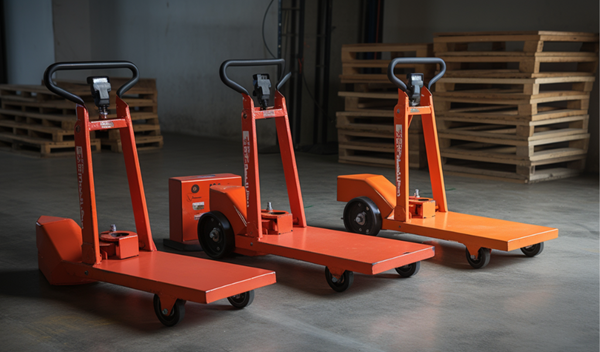


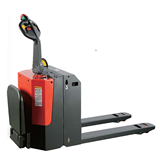





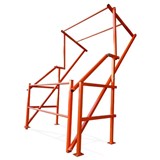
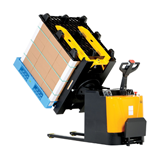
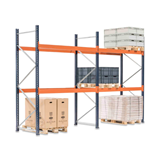





-160x160-state_article-rel-cat.png)




